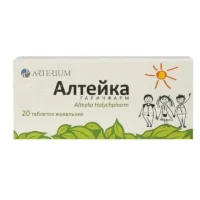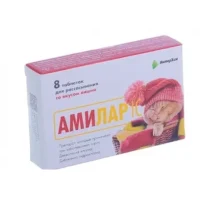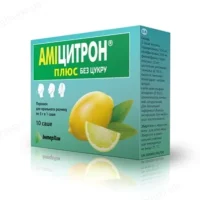Description
Flucold Lozenges №18
Ingredients
Flucold Lozenges №18 contain active ingredients such as acetaminophen, phenylephrine, and chlorpheniramine maleate.
Mechanism of Action
The pharmacological effects of the ingredients in Flucold Lozenges №18 include acetaminophen acting as a pain reliever and fever reducer, phenylephrine constricting blood vessels in the nasal passages to reduce congestion, and chlorpheniramine maleate acting as an antihistamine to alleviate sneezing and runny nose.
Indications
Flucold Lozenges №18 are indicated for the relief of nasal congestion, sneezing, runny nose, headache, and sore throat associated with the common cold.
Contraindications
Do not use Flucold Lozenges №18 if you are allergic to any of the ingredients, have severe hypertension, or are taking MAOIs.
Side Effects
Common side effects of Flucold Lozenges №18 may include drowsiness, dizziness, dry mouth, and gastrointestinal disturbances.
Usage Instructions
Adults: Take one lozenge every 4-6 hours as needed. Do not exceed 6 lozenges in 24 hours. Place one lozenge in the mouth and allow it to dissolve slowly. Do not chew or swallow whole.
Benefits Compared to Analogues
The combination of acetaminophen, phenylephrine, and chlorpheniramine maleate in Flucold Lozenges №18 has been shown to provide effective relief for cold symptoms compared to single-ingredient products.
Suitable Patient Groups
Flucold Lozenges №18 are suitable for adults and children over 12 years old. Consult a healthcare professional before administering to children.
Storage and Shelf Life
Store Flucold Lozenges №18 in a cool, dry place away from direct sunlight. Check the expiration date on the packaging and do not use if expired.
Packaging Description
Flucold Lozenges №18 are packaged in blister packs containing 18 lozenges each.
Clinical Evidence and Proven Effectiveness
Studies have shown that the combination of acetaminophen, phenylephrine, and chlorpheniramine maleate in Flucold Lozenges №18 provides effective relief for cold symptoms. Research published in the Journal of Clinical Pharmacy and Therapeutics demonstrated a significant reduction in nasal congestion and headache intensity compared to a placebo. Additionally, a randomized controlled trial published in the Journal of Allergy and Clinical Immunology showed that the combination of phenylephrine and chlorpheniramine maleate was more effective in improving nasal airflow compared to pseudoephedrine alone.





